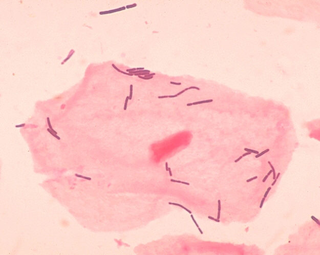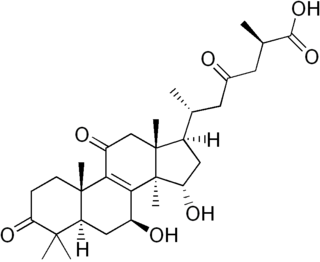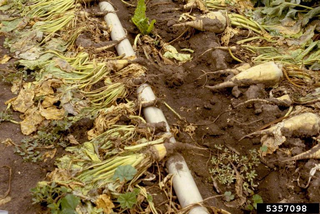
The Lactobacillaceae are a family of lactic acid bacteria. It is the only family in the lactic acid bacteria which includes homofermentative and heterofermentative organisms; in the Lactobacillaceae, the pathway used for hexose fermentation is a genus-specific trait. Lactobacillaceae include the homofermentative lactobacilli Lactobacillus, Holzapfelia, Amylolactobacillus, Bombilactobacillus, Companilactobacillus, Lapidilactobacillus, Agrilactobacillus, Schleiferilactobacillus, Loigolactobacillus, Lacticaseibacillus, Latilactobacillus, Dellaglioa, Liquorilactobacillus, Ligilactobacillus, and Lactiplantibacillus; the heterofermentative lactobacilli Furfurilactobacillus, Paucilactobacillus, Limosilactobacillus, Fructilactobacillus, Acetilactobacillus, Apilactobacillus, Levilactobacillus, Secundilactobacillus, and Lentilactobacillus, which were previously classified in the genus Lactobacillus; and the heterofermentative genera Convivina, Fructobacillus, Leuconostoc, Oenococcus, and Weissella which were previously classified in the Leuconostocaceae.
Transcription factor II H (TFIIH) is an important protein complex, having roles in transcription of various protein-coding genes and DNA nucleotide excision repair (NER) pathways. TFIIH first came to light in 1989 when general transcription factor-δ or basic transcription factor 2 was characterized as an indispensable transcription factor in vitro. This factor was also isolated from yeast and finally named TFIIH in 1992.

Ganoderic acids are a class of closely related triterpenoids found in Ganoderma mushrooms. For thousands of years, the fruiting bodies of Ganoderma fungi have been used in traditional medicines in East Asia. Consequently, there have been efforts to identify the chemical constituents that may be responsible for the putative pharmacological effects. The two most well described ganoderic acids out of the many that have been identified and characterized are ganoderic acids A and B. Some ganoderic acids have been found to possess biological activities including hepatoprotection, anti-tumor effects, and 5-alpha reductase inhibition.
Alternaria carthami is a necrotrophic plant pathogen of safflower. The fungus is in the order Pleosporales and family Pleosporaceae. It was first isolated in India, has spread globally and can have devastating effects on safflower yield, and resultant oilseed production. A. carthami is known to be seed-borne and appears as irregular brown lesions on safflower leaves and stems.

Neocamarosporium betae is a plant pathogen infecting Beta vulgaris (beet) and causes Phoma leaf spot. It was originally published and described in 1877 as Pleospora betae before being resolved as Neocamarosporium betae(Berl.) Ariyaw. & K.D. Hyde in 2015. It also causes leaf spot on Spinach plants.

Bradyrhizobium is a genus of Gram-negative soil bacteria, many of which fix nitrogen. Nitrogen fixation is an important part of the nitrogen cycle. Plants cannot use atmospheric nitrogen (N2); they must use nitrogen compounds such as nitrates.

Beet necrotic yellow vein virus (BNYVV) is a plant virus, transmitted by the plasmodiophorid Polymyxa betae. The BNYVV is a member of the genus Benyvirus and is responsible for rhizomania, a disease of sugar beet that causes proliferation of thin rootlets, and leads to a smaller tap root with reduced sugar content. Infected plants are less able to take up water, and wilting can be observed during the warm period of the year. If the infection spreads to the whole plant, vein yellowing, necrosis and yellow spots appear on the leaves, giving the virus its name.
Immunoglobulin heavy locus, also known as IGH, is a region on human chromosome 14 that contains a gene for the heavy chains of human antibodies.

Protein reversionless 3-like (REV3L) also known as DNA polymerase zeta catalytic subunit (POLZ) is an enzyme that in humans is encoded by the REV3L gene.

Chondroitin sulfate proteoglycan 5 is a protein that in humans is encoded by the CSPG5 gene.

Plexin domain-containing protein 1 is a protein that in humans is encoded by the PLXDC1 gene.

Betaenone B, like other betaenones, is a secondary metabolite isolated from the fungus Pleospora betae, a plant pathogen. Its phytotoxic properties have been shown to cause sugar beet leaf spots, which is characterized by black, pycnidia containing, concentric circles eventually leading to necrosis of the leaf tissue. Of the seven phytotoxins isolated in fungal leaf spots from sugar beet, betaenone B showed the least amount of phytotoxicity showing only 8% inhibition of growth while betaenone A and C showed 73% and 89% growth inhibition, respectively. Betaenone B is therefore not considered toxic to the plant, but will produce leaf spots when present in high concentrations (0.33 μg/μL). While the mechanism of action of betaenone B has yet to be elucidated, betaenone C has been shown to inhibit RNA and protein synthesis. Most of the major work on betaenone B, including the initial structure elucidation of betaenone A, B and C as well as the partial elucidation mechanism of biosynthesis, was presented in three short papers published between 1983 and 1988. The compounds were found to inhibit a variety of protein kinases signifying a possible role in cancer treatment.

Betaenone C, like other betaenones, is a secondary metabolite isolated from the fungus Pleospora betae, a plant pathogen. Of the seven phytotoxins isolated in fungal leaf spots from sugar beet, it showed 89% growth inhibition. Betaenone C has been shown to act by inhibiting RNA and protein synthesis.

Betaenones are phytotoxins found in the fungus Pleospora betae. The compounds were found to inhibit a variety of protein kinases.

Tagetitoxin (TGT) is a bacterial phytotoxin produced by Pseudomonas syringae pv. tagetis.
Prosolanapyrone-II oxidase (EC 1.1.3.42, Sol5, SPS, solanapyrone synthase (bifunctional enzyme: prosolanapyrone II oxidase/prosolanapyrone III cycloisomerase), prosolanapyrone II oxidase) is an enzyme with systematic name prosolanapyrone-II:oxygen 3'-oxidoreductase. This enzyme catalyses the following chemical reaction
Fatty-acid peroxygenase is an enzyme with systematic name fatty acid:hydroperoxide oxidoreductase (RH-hydroxylating). This enzyme catalyses the following chemical reaction
Prosolanapyrone-III cycloisomerase is an enzyme with systematic name prosolanapyrone-III:(-)-solanapyrone A isomerase. This enzyme catalyses the following chemical reaction
Bradyrhizobium betae is a species of legume-root nodulating, microsymbiotic nitrogen-fixing bacterium first isolated from the roots of Beta vulgaris, hence its name. It is slow-growing an endophytic. The type strain is PL7HG1T.
Albicidin is an antibiotic and phytotoxic molecule produced by the bacterium Xanthomonas albilineans which infects sugarcane causing leaf scald.













